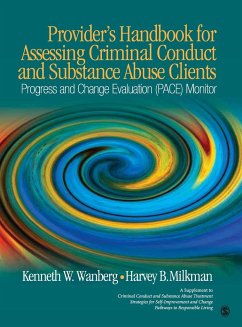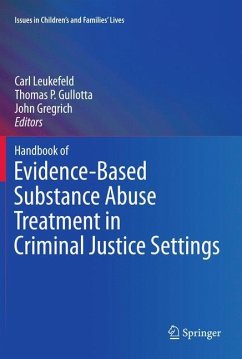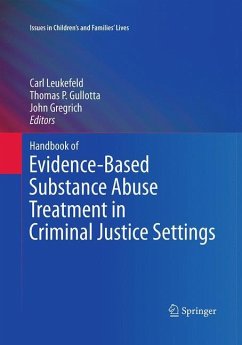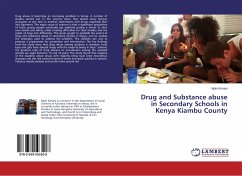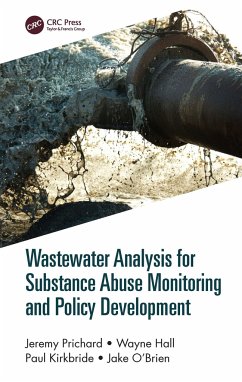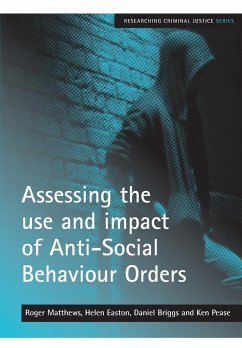
Provider's Handbook for Assessing Criminal Conduct and Substance Abuse Clients
Progress and Change Evaluation (PACE) Monitor; A Supplement to Criminal Conduct and Substance Abuse Treatment Strategies for Self Improvement and Change; Pathways to Responsib

PAYBACK Punkte
63 °P sammeln!
Handbook of Assessing and Treating Substance Abuse and Criminal Conduct:The Progress and Change Evaluation (PACE) Monitor is an instructive guide that helps agencies and providers assess, monitor and evaluate the change and progress made by criminal justice clients at the beginning, during and after treatment. The guide contains dozens of instruments used to assess and evaluate clients, along with a description of each item and instructions on how to score and interpret it. It was created to be used in conjunction with the Criminal Conduct and Substance Abuse Treatment: Strategies for Self Imp...
Handbook of Assessing and Treating Substance Abuse and Criminal Conduct:The Progress and Change Evaluation (PACE) Monitor is an instructive guide that helps agencies and providers assess, monitor and evaluate the change and progress made by criminal justice clients at the beginning, during and after treatment. The guide contains dozens of instruments used to assess and evaluate clients, along with a description of each item and instructions on how to score and interpret it. It was created to be used in conjunction with the Criminal Conduct and Substance Abuse Treatment: Strategies for Self Improvement and Change curriculum, but the instruments are general enough that they can be used separately and with other curriculums as well. The tools provided in this book will be highly useful for anyone working with clients with co-occurring issues of substance abuse and criminal conduct. SAGE offers treatment and training programs for mental health providers that you can easily incorporate into your existing programs. Visit www.sagepub.com/satreatments to learn more about these treatment and training programs.





